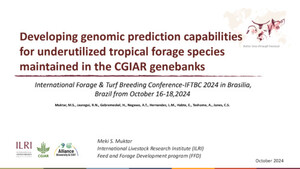
Hitting the target and missing the point? On the risks of measuring women’s empowerment in agricultural development
Abstract
There is a strong impetus in international agricultural development to close ‘gender gaps’ in agricultural productivity. The goal of empowering women is often framed as the solution to closing these gaps, stimulating the proliferation of new indicators and instruments for the targeting, measurement, and tracking of programmatic goals in research for agricultural development. Despite these advances, current measurements and indices remain too simplified in terms of unit and scope of analysis, as well as being fundamentally flawed in how they aim to capture the relevance of ‘gender’ in diverse local contexts. We propose that the impulse to apply exogenously defined and weakly validated ‘women’s empowerment measures to diverse local contexts risks prioritizing practical expedience over scientific accuracy and societal relevance. Furthermore, the application of such measures risks creating the impression that programmatic “gender targets” are being achieved, while simultaneously undermining substantive gender transformative goals. The authors conclude that a different methodological approach grounded in participatory and qualitative methods is needed to create more meaningful metrics for assessing progress towards women’s empowerment.
Citation
Tavenner, K. and Crane, T.A. 2022. Hitting the target and missing the point? On the risks of measuring women’s empowerment in agricultural development. Agriculture and Human Values 39:849–857.









